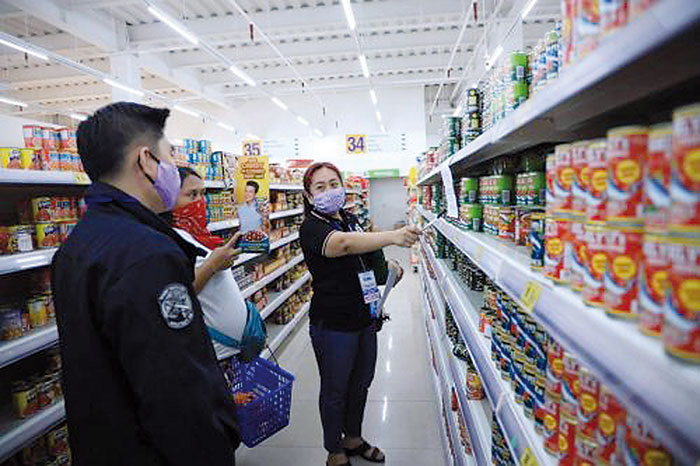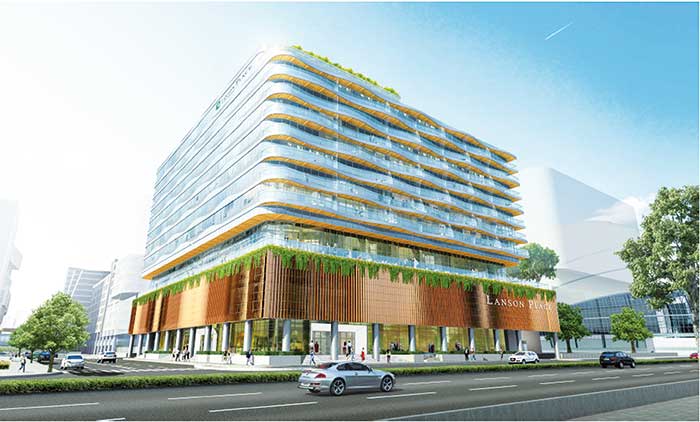The peso exchange rate yesterday hit a new record low for the fifth straight day as the US dollar continued to strengthen while the local equities market declined to its lowest since October, 2020.
The peso closed at 58.99 to a dollar, 0.49 centavos lower than Friday’s close of 58.5.
Trading was halted Monday as Typhoon Karding battered most of Central Luzon.
Since the start of 2022, the peso has depreciated by a total of P7.99 or 15.7 percent from its end-2021 close of P50.999.
Yesterday’s close was also the 11th record low closing rate for the peso-dollar exchange rate since the start of 2022.
Michael Ricafort, RCBC chief economist, said the depreciation was mainly due to the “continued increase in the US dollar against other major global currencies.”
“(Dollar’s strength is) due to Fed expectations of another large +0.75 basis points Fed rate hike on November 2022 and total Fed rate hikes of 1.00-1.25 for the rest of 2022,” Ricafort said.
He added that with yesterday’s developments, economists now see a possible “off-cycle local policy rate hike, or more intervention in the local foreign exchange markets.”
“Both of which could help stabilize the peso exchange rate as well as overall inflation,” Ricafort said.
As prices of major consumer items remain elevated, the Monetary Board last week decided to raise the overnight reverse repurchase facility of the Bangko Sentral ng Pilipinas (BSP) again by another half-percentage point to 4.25 percent.
That was the fifth consecutive tightening action by the Monetary Board this year. The key rates have been raised by a total of 225 basis points to combat broadening price pressures.
The Board stressed the risks to the inflation outlook “remain tilted toward the upside until 2023 and broadly balanced in 2024.”
Full-year inflation average is now pegged at 5.6 percent, breaching the government’s full-year target range of between 2 and 4 percent by more than one-and-a-half percentage point.
Ricafort added sentiment on the peso and local financial markets “also weighed by Super Typhoon Karding damage especially on agriculture that could lead to some pick up in food/agricultural prices and overall inflation.”
Next resistance level is seen at between 59 and 59.25 levels.
Ricafort said t the recent “sell-off in the global stock and bond markets also due to more aggressive central bank rate hikes and risks of US recession also supported the US currency as a settlement currency for global investors as well as a safe haven amid increase global market risk aversion.”
The Philippine Stock Exchange index lost 239.47 points, a 3.83 percent drop to end the day at 6,020.07. The broader all shares index was also down, shedding 107.06 points or 3.2 percent to 3,234.23.
Losers edged gainers 189 to 28 with 37 stocks unchanged. Trading turnover reached P20.88 billion.
Luis Limlingan, managing director at Regina Capital and Development Corp., said the market tracked the sell-off overseas “on the back of an aggressive Federal Reserve and surging interest rates, which in turn have roiled currency markets.”
“The Federal Reserve’s aggressive hiking campaign, coupled with the UK’s tax cuts announced last week has caused the dollar to surge, pushing to peso to the 59 territory,” he said.
The recession fears brought about by currency volatility also led to oil prices falling, Limlingan said.
Most actively traded San Miguel Corp. was down P0.15 to P97.50. SM Investments Corp. was down P45 to P764. Ayala Land Inc. was down P0.60 to P24.40. SM Prime Holdings Inc. was down P1.80 to P32.25. International Container Terminal Services Inc. was down P0.90 to P181. BDO Unibank Inc. was down P8.40 to P115. Ayala Corp. was down P26 to P670.
Bank of the Philippine Islands was down P4.35 to P88.85. Universal Robina Corp. was down P3.90 to P112.20. PLDT Inc. was down P62 to P1,558.
Meanwhile, Press Secretary Trixie Cruz-Angeles said President Marcos Jr. is “coordinating with his economic team and closely monitoring the value of the peso against the dollar.”
“The President is in constant touch with the Economic Team, and they are closely monitoring this. As you know… the inflation rate isn’t due to any local factors, it’s really about the exchange rate, but it is a matter for the President, which the President closely monitors on a regular basis,” Cruz-Angeles said.
Cruz-Angeles, meanwhile, stood by the current monetary targets set by the country’s economic managers for the country amid the International Monetary Fund’s (IMF’s) lowering of growth for the Philippines to 6.5 percent from 6.7 percent in 2022, and to 5 percent from 6.3 percent in 2023.
“We will have to see about that,” she said, adding that the country’s economic managers are in a better position to determine how the country will grow this year and next year.
“Our economic managers forecast a higher growth. So, they are in a much better position to make that determination and that forecast. Our fundamentals are strong, the economy is in a good resurgence, and we are experiencing a good rate of growth right now. So, we will have to see in the end whether that forecast is going to be more accurate than the local forecast,” she added.
The IMF said the downward adjustment in growth forecast was due to the monetary policy tightening carried out by the BSP this year.
It added that the IMF’s growth outlook for the domestic economy “is subject to significant downside risks, where policy tradeoffs between output and inflation would become more acute.” –with Ruel Albert Castro, Jocelyn Montemayor






